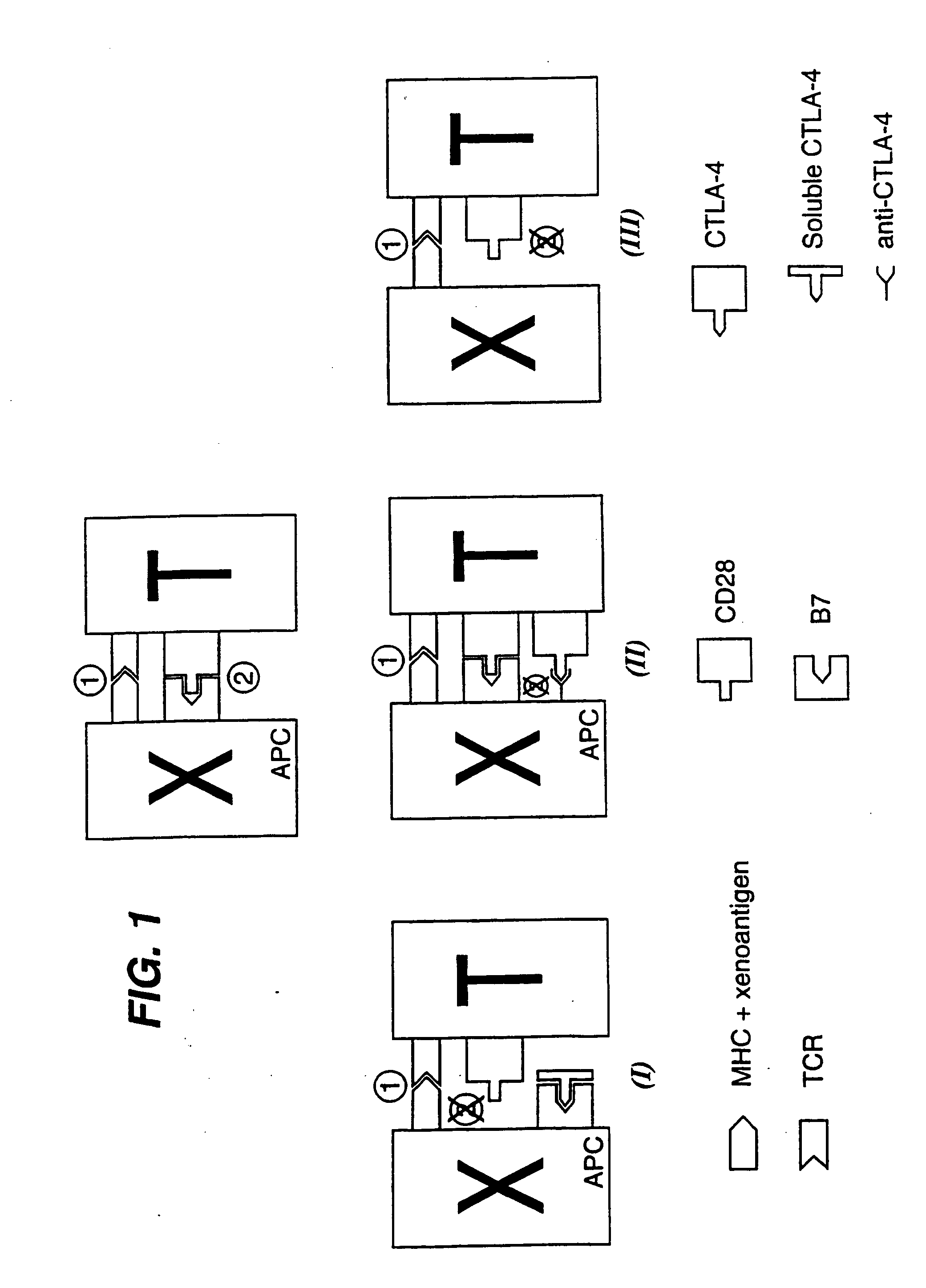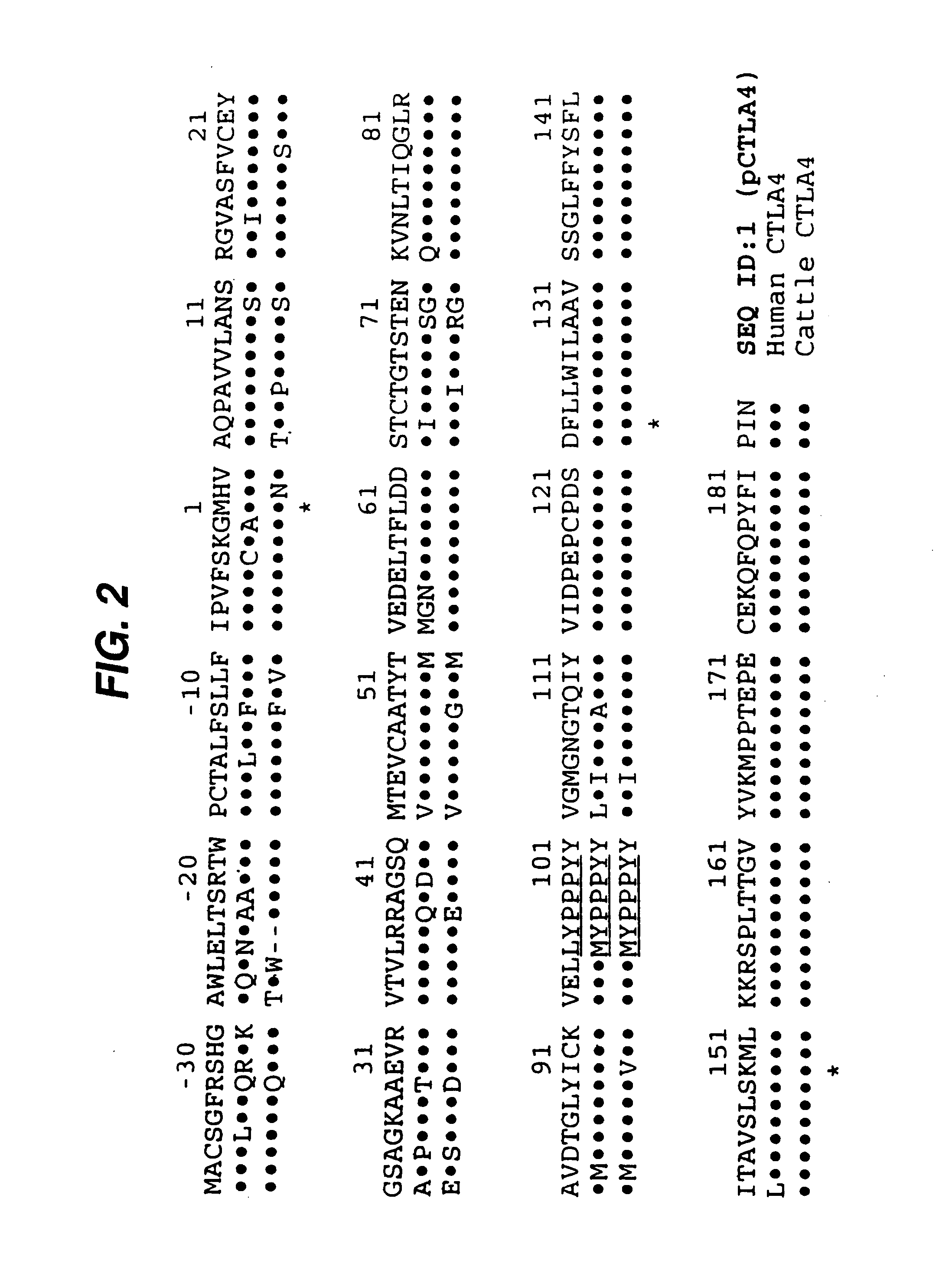Immunosuppression by blocking T cell co-stimulation signal 2 (B7/CD28 interaction)
- Summary
- Abstract
- Description
- Claims
- Application Information
AI Technical Summary
Benefits of technology
Problems solved by technology
Method used
Image
Examples
Embodiment Construction
[0014]The invention provides methods and biological reagents for inhibiting T-cell mediated rejection of a xenotransplanted organ by blocking the delivery of co-stimulatory signal 2 in order to prevent the activation of xenoreactive T-cells in the recipient.
[0015]This is embodied in three aspects, which are illustrated in FIG. 1. It will be appreciated that these three aspects can be used in isolation or in various combinations. Furthermore, conventional immunosuppressive techniques may be used alongside those of the invention.
[0016]The following should be read in conjunction with the section entitled “Definitions”, which begins on page 8.
[0017]The First Aspect
[0018]In a first aspect, co-stimulation by signal 2 is prevented by administration to the organ recipient of a soluble form of CTLA-4 from the xenogeneic donor organism. If, for instance, a pig organ (donor) were being transplanted into a human (recipient), a soluble form of porcine CTLA-4 (see below) would be administered to ...
PUM
| Property | Measurement | Unit |
|---|---|---|
| Solubility (mass) | aaaaa | aaaaa |
Abstract
Description
Claims
Application Information
 Login to View More
Login to View More - R&D
- Intellectual Property
- Life Sciences
- Materials
- Tech Scout
- Unparalleled Data Quality
- Higher Quality Content
- 60% Fewer Hallucinations
Browse by: Latest US Patents, China's latest patents, Technical Efficacy Thesaurus, Application Domain, Technology Topic, Popular Technical Reports.
© 2025 PatSnap. All rights reserved.Legal|Privacy policy|Modern Slavery Act Transparency Statement|Sitemap|About US| Contact US: help@patsnap.com



